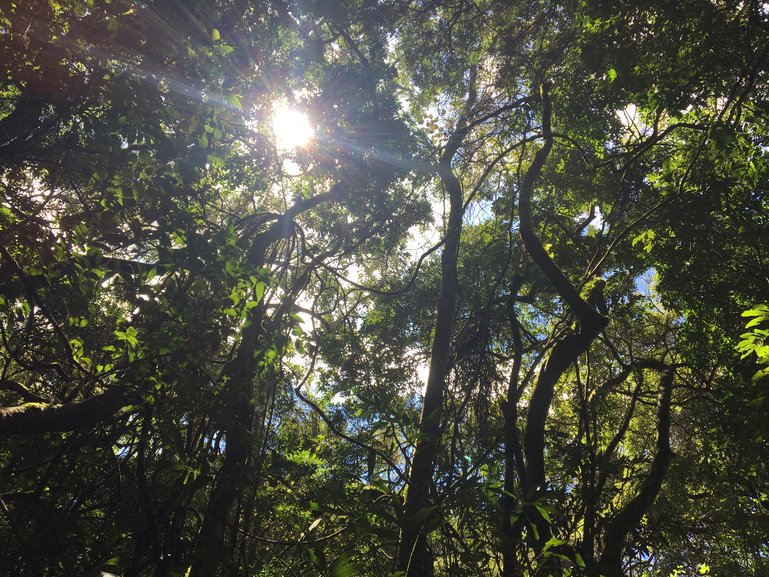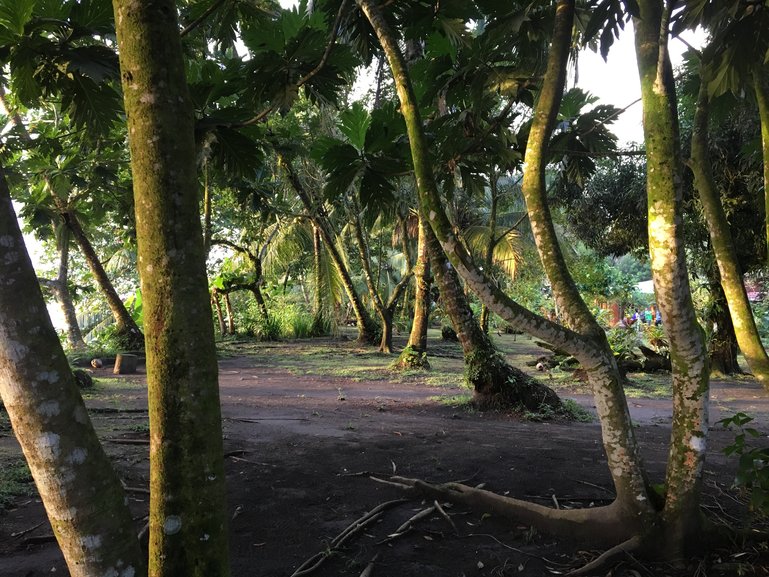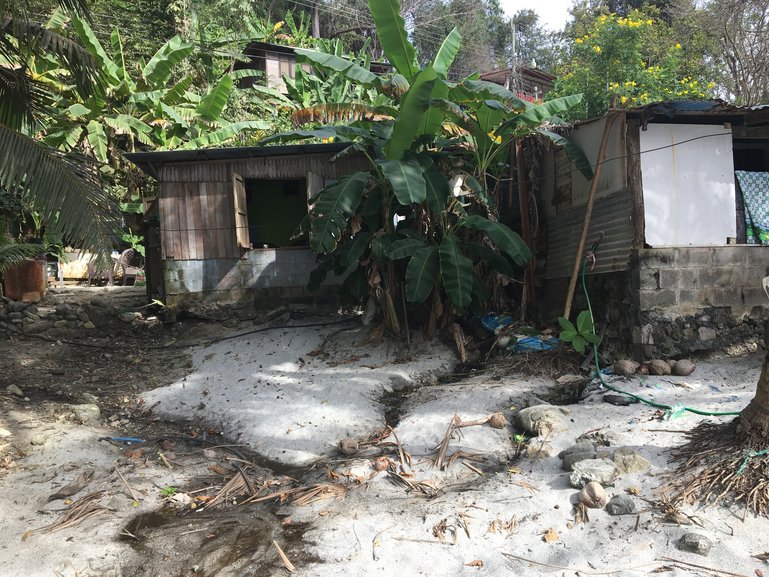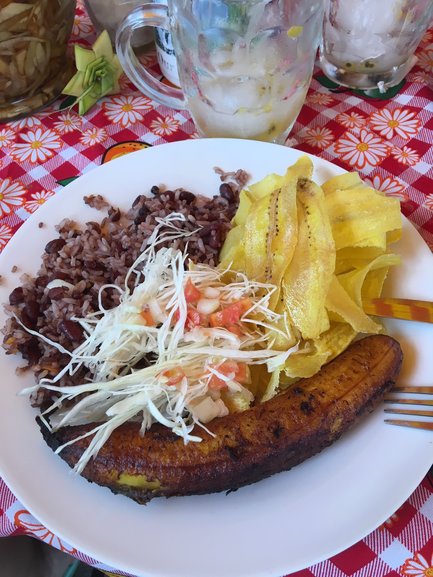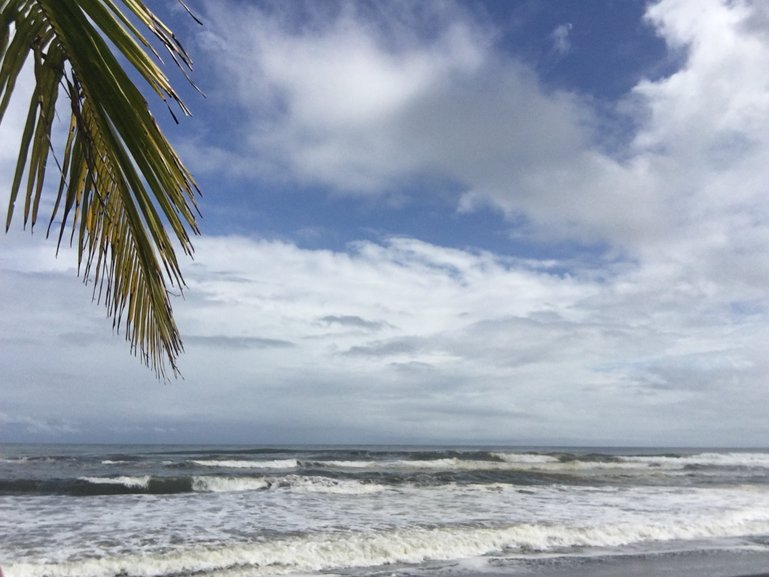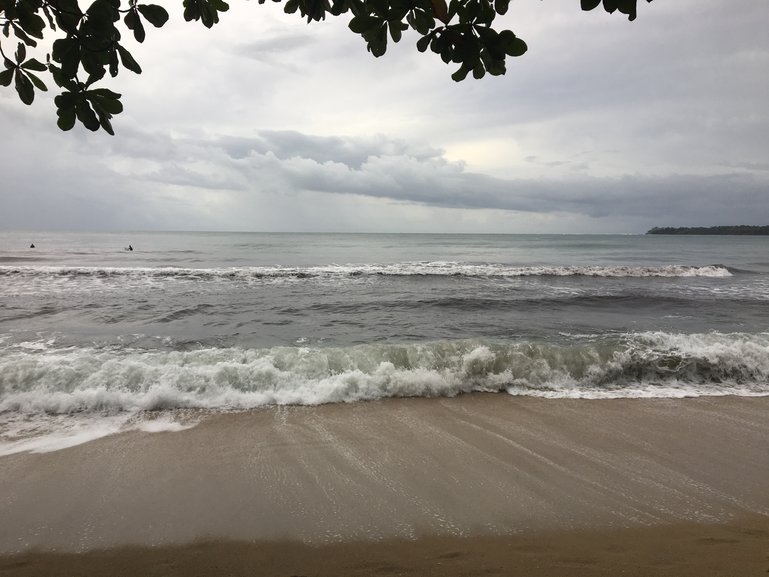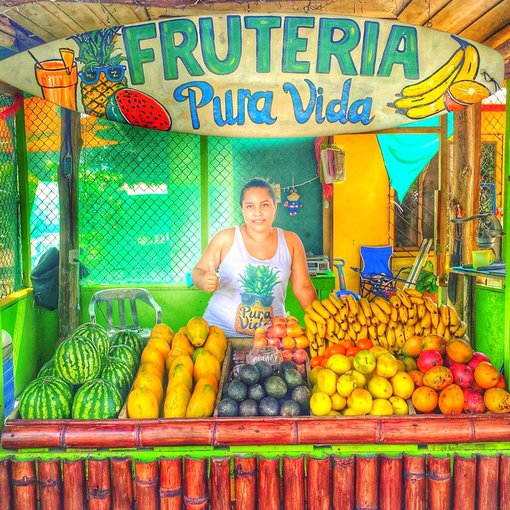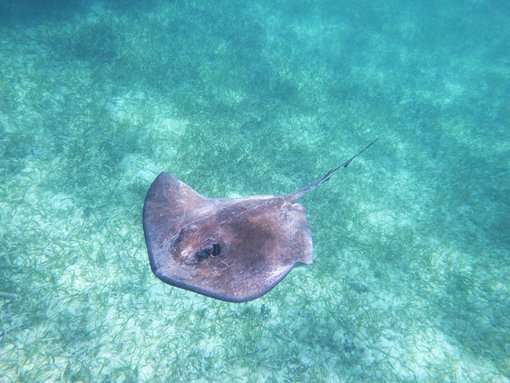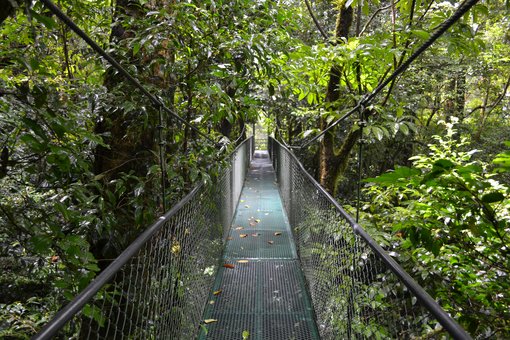Costa Rica is one of the most amazing countries I’ve ever been to and a must-see for all nature lovers.
Located in Central America, it only covers 0.03% of the earth, but inhabits about 5% of all known biodiversity. Approximately 26% of its surface are conserved and protected.
Costa Rica’s people (Ticos for males and Ticas for females) are some of the most friendly and open people I’ve ever met and even though English is widely spoken, I’d still recommend everyone to learn at least a little bit of Spanish to be able to communicate with everyone.
My favourite facts about Costa Rica are that the army has been abolished in 1948, making Peace one of the country’s main principles and its pioneering position on sustainability. By 2021 Costa Rica aims to be the world’s first carbon neutral country!
From tanning on a stunning beach on the Pacific, to wild-animal-encounters in a National park, to hikes up volcanoes and getting to know the Creole culture on the Caribbean side, there is so much to do!
My Itinerary:
- San Jose
- Monteverde (2 nights)
- Tortuguero (2 nights)
- Puerto Viejo (4 nights)
- Quepos Manuel Antonio
- Montezuma (4 nights)
- Santa Teresa (1 night)
- San Jose
Getting to Costa Rica (via bus)
I started my trip with a (pre-booked) Tica bus journey from Managua in Nicaragua to Costa Rica’s capital San Jose. Tica Bus has routes all around Central America and their website is in both English and Spanish and really easy to navigate.
I had crossed the Penas Blancas border between Costa Rica and Nicaragua several times and no two times were the same, so my best advise would be to stick with the bus group and wait for the bus driver to tell you what to do.
All I needed was my passport (valid for at least 90 days), small US $ bills (for the taxes – in Costa Rica you’ll only pay an exit tax; currently at US$9) and a confirmation of a return ticket within 90 days.
If you’re coming from Europe or the US, flying into San Jose makes most sense. The capital is the best base for any onward travel and you could take a day to see the city, although I’d say there’s so much more to see in Costa Rica than San Jose.
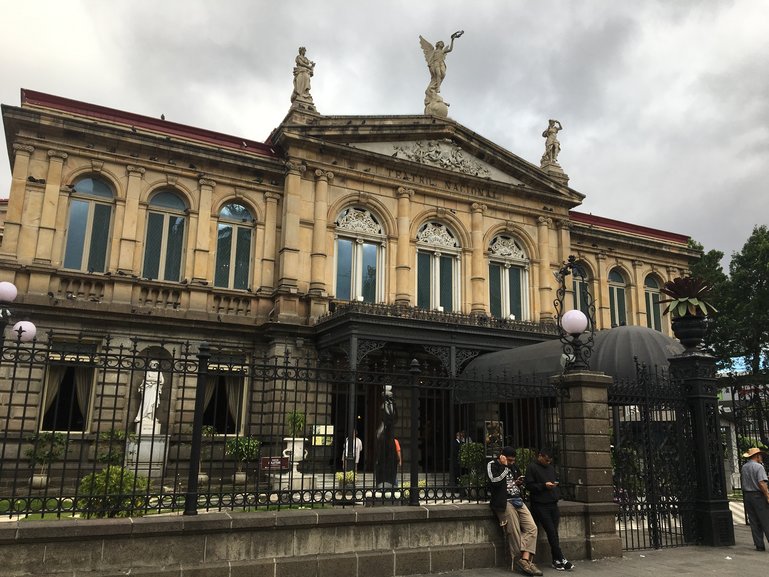
The National Theatre in San Jose
Budget and Currency
The local currency in Costa Rica is Colon, but US Dollars are widely accepted. 1 Dollar is about 550-600 colones. As a rule of thumb, I paid for most travel and food in colones and the hostels in dollars.
I made the rookie mistake of not changing the bigger bills, which later was a problem, so make sure you don’t run around with several $100-bills, especially if you’re only paying small sums.
Compared to Nicaragua, Costa Rica is relatively expensive. At the beginning of my trip I calculated to spend a maximum of US$40 per day for accommodation, travel, food and activities. Some days I spent (way) more, but because I was really low maintenance on the accommodation part, I managed to save some money there. At the beginning of my trip, I wrote down every expense and really was on top of my budget, which I really recommend doing, because after I stopped taking notes, had some money stolen (top tip: don’t squish your loose money into the front pocket of your backpack) and a few party nights in Puerto Viejo I had to conclude that I would run out of money and had to change some of my plans.
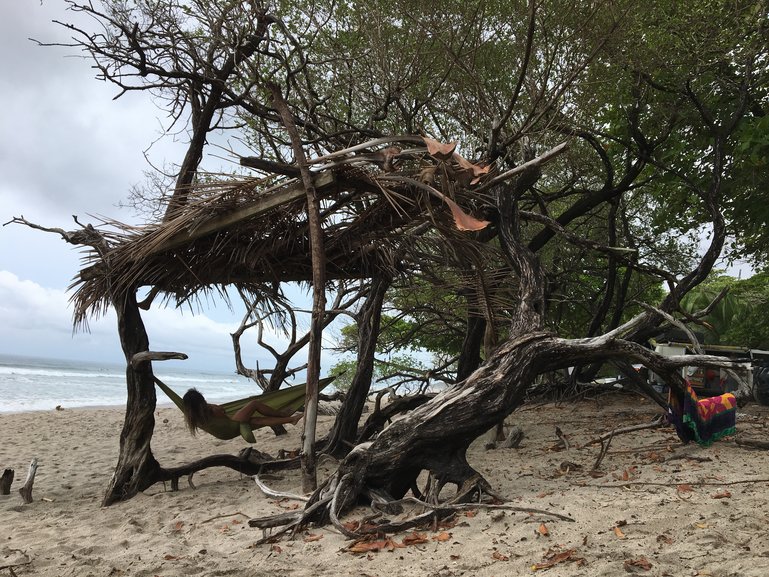
Plan B was a hammock at the beach
Accommodation
I didn't have anything pre-booked before I went and I had no trouble finding somewhere to stay, except for the New Year's night in Puerto Viejo (I mean, anyone else could have totally foreseen that...) - but even then, after what felt like asking every single hostel and hotel in the village about their prices, I managed to negotiate a reduced rate for a hammock in the backyard of a hostel really close to the beach and quite central.
Most hostels will charge around $10-$20 per night for a bed in a dorm, but if you go for a hammock or tent option, they’ll charge less.
In Montezuma I used the couchsurfing app and I recommend that to anyone who is keen to meet local people. It's such an amazing way to get to know the non-touristy side of the country or town.
Just find someone whose bio resonates with you and also have a look at past reviews and you'll be absolutely fine and in for an adventure!
Getting around
I found Costa Rica’s coach system really good. I used the website/app Yo Viajo , which was the most useful tool during my whole trip. It tells you the schedule, prices, routes and even name of the coach company doing that journey. The only thing that was a little bit annoying was that most routes would go via San Jose, so I think I saw that bus terminal 3 or 4 times in those 3 weeks.
Food
I love the food in Costa Rica. You’ll see gallo pinto everywhere – the Costa Rican take on rice and beans (there’s a funny dispute going on with Nicaragua over who invented it; I liked both versions), which will also be prepared differently depending on the area you’re in. A big plate with gallo pinto, platanos (fried Plantain) and salad never cost me more than $5 (A plate with meat would obviously be a little bit pricier). I cooked a lot as well and the groceries were slightly cheaper than in the UK.
Per day I probably spent around $10-$15 on food.
Seasons
Costa Rica has two seasons – the dry season Verano is from January – April and the rainy season (or green season, as some prefer to call it) invierno is from May to December.
Travelling off-season can save you a lot of money and depending on which part of Costa Rica you’re visiting, you can still make the most of your stay.
Pacific Coast
The Pacific coast is known for its beautiful beaches and the surfing opportunities. It’s generally dryer than the Caribbean coast and the rainy season generally runs from May to November.
I spent some time in Guanacaste (which is roughly in the Northern part of the Pacific side), where it got pretty cold and rainy in October/November. Would not necessarily recommend going there at that time.
Monteverde, where I spent a few days towards the end of December was really windy and pretty cold in the evenings, but you’re quite high up (Monteverde translates to “Green mountain” 😊) and in/near the rain forest, so that’d be expected. It’s also 100% worth it, just pack enough layers and you’ll be fine.
Nicoya is known to be the driest part of Costa Rica, but also quite humid. I went to Montezuma in mid-January and I found the weather conditions to be perfect, with around 25-30 degrees every day.
Caribbean Coast
The Caribbean coast is a bit more humid than the pacific side, but apparently the rain is a bit more widespread throughout the year. So during the wettest months in most parts of Costa Rica in September/October, the Caribbean side is the warmest and driest.
I went to Puerto Viejo at the end of December and it was pretty warm, with some sunny days and clouds on the others.
Tortuguero was very humid at that time and it still rained a lot, so I don’t know if I was just unlucky or if that is standard (since you’re near the rainforest again, maybe that’s just to be expected, but equipped with layers and a rain coat, you’ll be fine and it’s worth it!).
